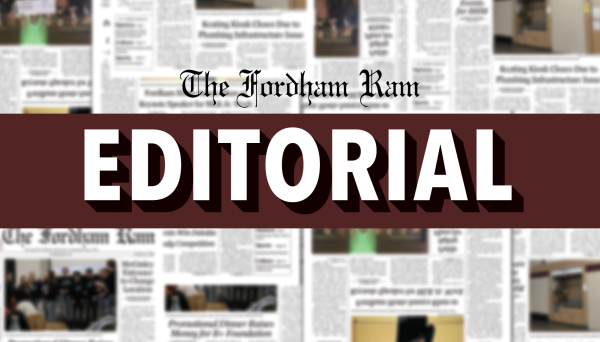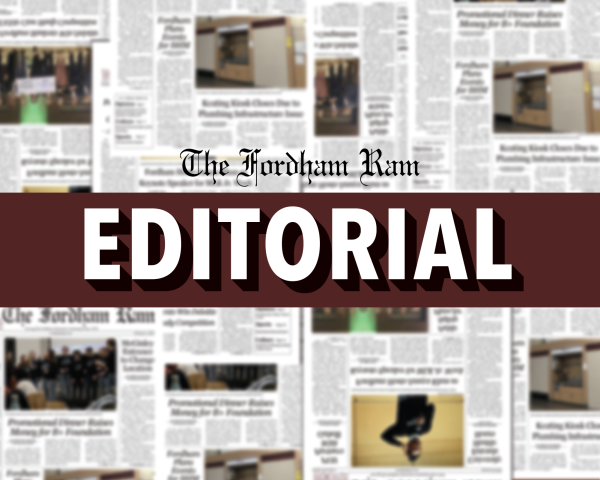Fewer Dining Locations, More Student Diners
In many respects, Fordham University has done a decent job restoring campus to its pre-coronavirus state. Our classrooms have the correct number of chairs and desks, and study spaces in the library are open again. However, Fordham seems to have overlooked a crucial part of bringing campus back to full capacity: its dining halls.
Expanding dining locations to full capacity involves more than just peeling off the social distancing stickers on the floor. It is clear that Fordham was not ready for the deluge of students pouring into its on-campus dining options. The wait times are ridiculously long regardless of whether students order using Grubhub or go to order in person. The dining employees seem overwhelmed and unprepared to handle the high volume of students ordering food. We do not blame them for this — they are trying their best to serve students food in a hectic environment. However, we do see a problem with Fordham’s management of this issue.
In March 2020, Fordham’s dining locations closed down when students were sent home for the remainder of that semester. When students returned in August 2020, almost all of these locations reopened. One of the stragglers, Salt & Sesame, reopened last month. But one location never did: Dagger John’s tucked away in the McGinley Center basement remains permanently closed.
Dagger John’s was home to three dining options: Chopsticks, which cooked Asian food; Sambazon, which made açaí bowls and BKG Coffee Roasters, which sold coffee and muffins. There was a large dining area, and while wait times could get long, the place was rarely crowded. We won’t romanticize the site — it was a Fordham Dining location, not a five-star restaurant — but we want to point out the void it left behind, especially in light of long wait times at locations across campus.
During the 2020-21 school year, far fewer students were around — Rose Hill’s “on-ground population” was 5,193 people. With fewer students attempting to eat on campus, we did not notice the loss of Dagger John’s — there were plenty of other options, and the wait times were predictable and reasonable. At most, students had to wait 20 minutes for their orders to be ready to pick up.
This semester, the on-ground population consists of 9,408 people, of which 3,425 are students living in university housing. Many Fordham students in on-campus housing are required to use a meal plan because their dorms lack kitchens. This burden generally falls on underclassmen, and this year, it disproportionately affects freshmen. Due to the high volume of orders being placed, students are waiting 40 minutes for their food.
There have been rumblings of new dining options, but nothing has come to fruition. Last spring, one of our writers talked to Fordham Dining Contract Liaison Deming Yaun about plans for future dining locations at Rose Hill. We learned of plans for a partnership with Sous Vide Kitchen and rumors of a halal option on Rose Hill’s campus. We think these additions are long overdue, and we ask where those plans and rumors leave us today. When will dining options expand to accommodate an influx of students?
The current Fordham Dining situation is unsustainable. It is impossible to increase the number of student diners, decrease the number of dining locations and expect the process to go as smoothly as before the pandemic began. Something must change: Fordham needs to find a way to cut down wait times and relieve pressure on its dining employees. We hope Fordham will address this issue and work to improve it.
To all our freshman readers, we want to express our sympathy. We know that your dorms do not have kitchens and that you are dependent on Fordham for your meal plans. It’s hard enough learning how to take care of yourself without the added uncertainty of mealtime. Fordham must take swift action to remedy this issue.













































































































































































































